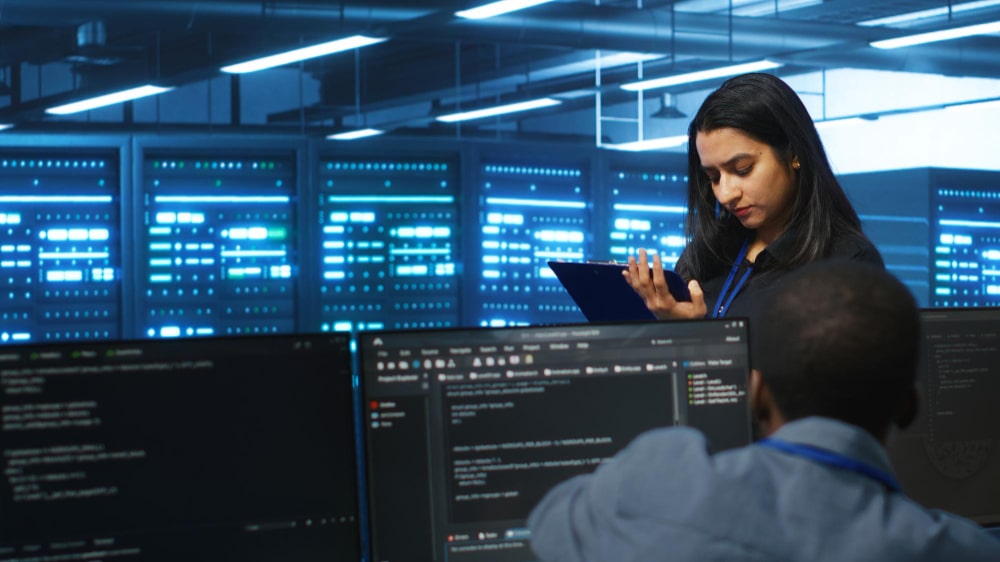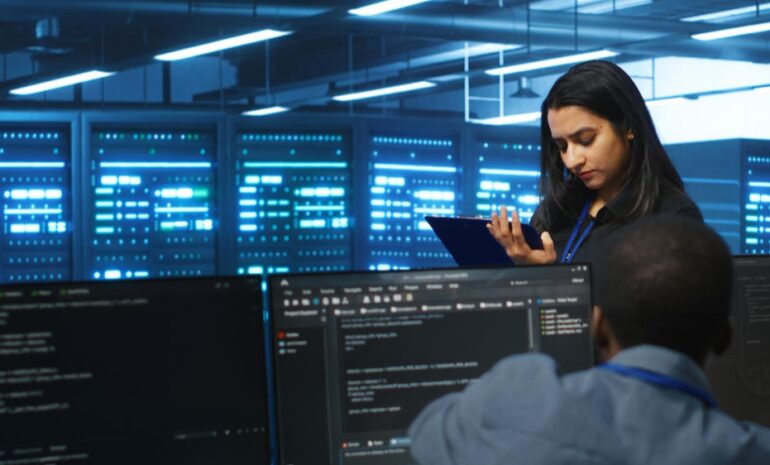The IT landscape is evolving at an unprecedented pace, driven by rapid advancements in cybersecurity, data analytics, artificial intelligence, and software development. As businesses increasingly rely on technology to remain competitive, staying ahead of emerging trends is crucial for long-term success. In 2025, the convergence of automation, security, and data-driven decision-making will reshape industries. This blog explores the top predictions in these domains and provides actionable steps for businesses to prepare and benefit.
Cybersecurity Predictions for 2025
1. Zero-Trust Architectures Will Become the Standard
Zero-trust security models will replace traditional perimeter-based security approaches, requiring continuous authentication and strict access controls for users and devices.
Actionable Steps:
- Implement multi-factor authentication (MFA) and least privilege access controls.
- Deploy network segmentation to limit lateral movement of potential threats.
- Conduct regular security assessments and adopt zero-trust frameworks like NIST 800–207.
2. AI-Driven Threat Detection Will Dominate
Machine learning algorithms will enhance real-time threat detection and response, enabling organizations to combat sophisticated cyberattacks proactively.
Actionable Steps:
- Invest in AI-powered security information and event management (SIEM) systems.
- Train cybersecurity teams to leverage AI for threat intelligence.
- Automate incident response to minimize human intervention in critical security events.
3. Quantum-Safe Encryption Will Gain Traction
As quantum computing advances, organizations must prepare for cryptographic algorithms that are resistant to quantum attacks.
Actionable Steps:
- Evaluate existing encryption protocols and transition to quantum-resistant algorithms.
- Follow guidelines from NIST’s Post-Quantum Cryptography Standardization Project.
- Partner with cybersecurity vendors to future-proof encryption strategies.
Data Analytics Trends for 2025
1. Real-Time and Augmented Analytics Will Drive Decision-Making
Businesses will prioritize real-time data processing to enhance agility and responsiveness.
Actionable Steps:
- Upgrade legacy data systems to support streaming analytics platforms like Apache Kafka and Snowflake.
- Implement AI-driven analytics tools to automate insights generation.
- Foster a data-driven culture by training employees in data literacy.
2. Data Mesh and Cloud-Native Architectures Will Transform Analytics
The shift towards decentralized data architectures will enable scalable and self-service analytics across organizations.
Actionable Steps:
- Transition from monolithic data warehouses to federated data mesh architectures.
- Adopt cloud-native data processing platforms such as Google BigQuery or AWS Redshift.
- Establish clear governance policies to manage distributed data assets securely.
AI/ML Predictions for 2025
1. Generative AI Will Power Innovation Across Industries
AI models capable of generating text, images, and code will become more sophisticated, driving efficiencies in creative and technical fields.
Actionable Steps:
- Leverage generative AI tools like OpenAI’s GPT and DALL-E for automation and content creation.
- Develop ethical AI guidelines to prevent bias and misinformation.
- Invest in AI upskilling programs for employees.
2. Explainable AI (XAI) Will Improve Trust and Compliance
As AI adoption grows, businesses will demand transparency in machine learning decisions to ensure regulatory compliance and fairness.
Actionable Steps:
- Implement XAI frameworks to make AI models interpretable.
- Use AI auditing tools to detect bias and ensure fairness.
- Align AI implementations with industry compliance standards (e.g., GDPR, CCPA).
Software Development Trends for 2025
1. Low-Code/No-Code Platforms Will Accelerate Development
These platforms will enable non-technical users to build applications, reducing software development bottlenecks.
Actionable Steps:
- Integrate platforms like OutSystems, Mendix, or Microsoft Power Apps into development workflows.
- Train employees on low-code tools to increase efficiency.
- Use no-code solutions for rapid prototyping and business process automation.
2. AI-Powered IDEs Will Enhance Developer Productivity
Tools like GitHub Copilot and TabNine will automate code generation, debugging, and optimization.
Actionable Steps:
- Incorporate AI-assisted coding tools into daily development processes.
- Provide training to developers on maximizing AI capabilities.
- Continuously evaluate AI-generated code for security and performance issues.
3. DevSecOps Will Become the Norm
Security integration into the software development lifecycle (SDLC) will be a mandatory practice rather than an afterthought.
Actionable Steps:
- Automate security testing within CI/CD pipelines using tools like Snyk and Checkmarx.
- Implement security training for developers to foster a DevSecOps mindset.
- Monitor applications continuously for vulnerabilities and compliance.
As cybersecurity, data analytics, AI/ML, and software development evolve, businesses must proactively embrace these advancements to maintain a competitive edge. The integration of zero-trust security, real-time analytics, generative AI, and DevSecOps will define the IT landscape in 2025. Organizations that invest in these technologies and upskill their workforce will be well-positioned to lead in the digital future.
Are you ready to future-proof your business? Contact BIBISERV for tailored IT solutions that align with emerging trends and drive innovation.

